Dynamic Form
With Dynamic Form, you have the flexibility to customize the form or template according to your specific requirements using a customized JSON structure.
How to Setup
1 Go to Workspace > Workflows, and click on the flow created for Dynamic Form. If you need understanding xin creating a workflow, refer to the step-by-step guide here.
2 Hover over the plus (+) symbol and select Workflow. From the list, click Dynamic Form to add it.
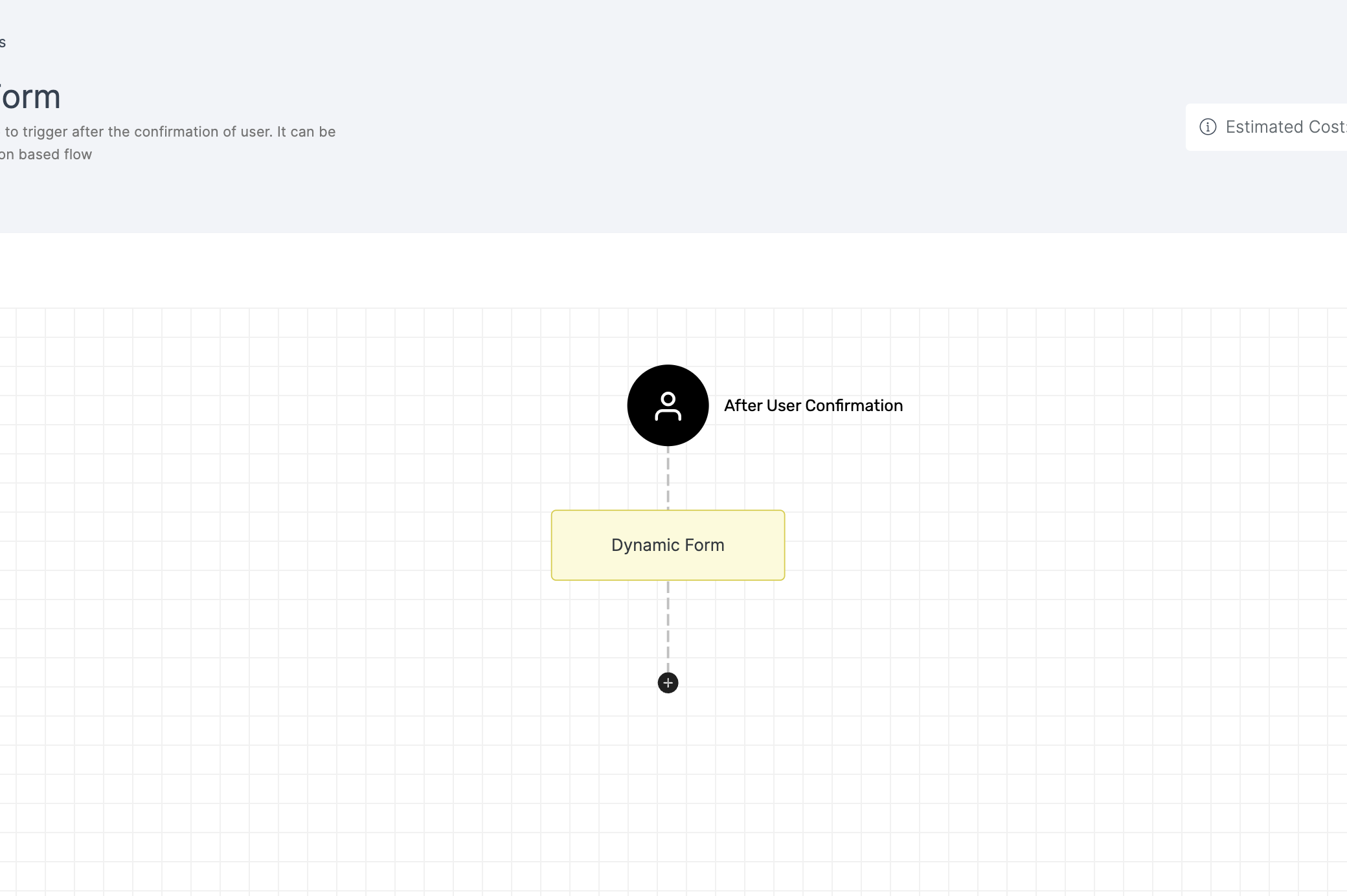
3 Click on the newly added workflow, then select the General tab to customize your preferences.
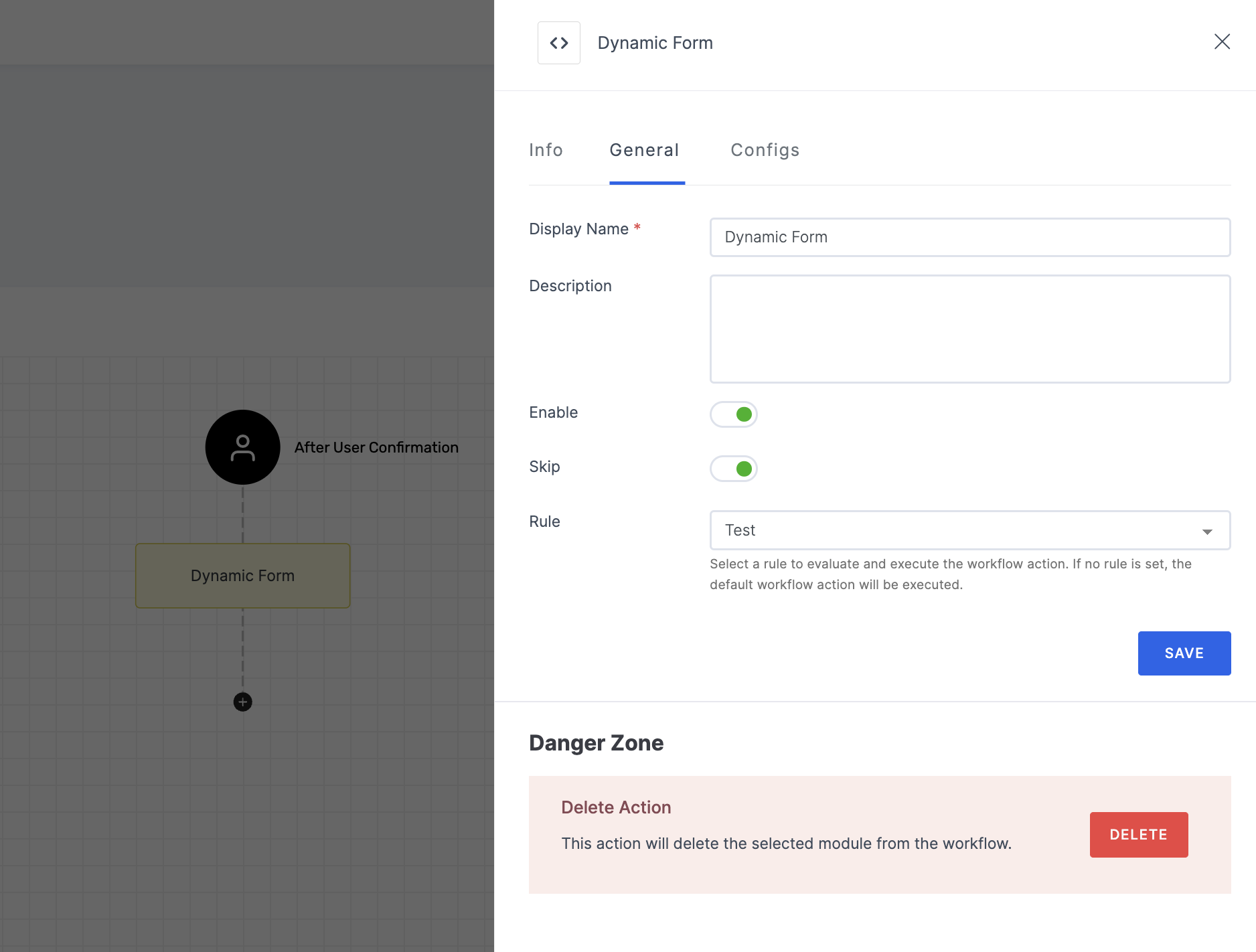
Manage General
(*) Indicates an action to be mandatory.
| Name | Description |
|---|---|
| Display Name* | Set a name to the workflow for easy identification. |
| Description | Summarize the purpose and functionality of this workflow module. |
| Enable | This toggle is enabled by default. When enabled, the particular workflow module begins its execution. Conversely, if disabled, the workflow module remains inactive and won't proceed. |
| Skip | Allows the user to skip this specific workflow module during execution. When selected, it provides an option to bypass the particular workflow without affecting other modules in the sequence. |
| Rule | This determines the criteria for triggering the particular workflow module. When the selected rule is evaluated, and is satisfied, the workflow proceeds as provided. If not, the workflow will not be executed. Note: If no rules are set, the workflow defaults to its standard action without any rule. For more information about the rules, refer here. |
4 Then, click on the Configs tab to set the necessary configurations.
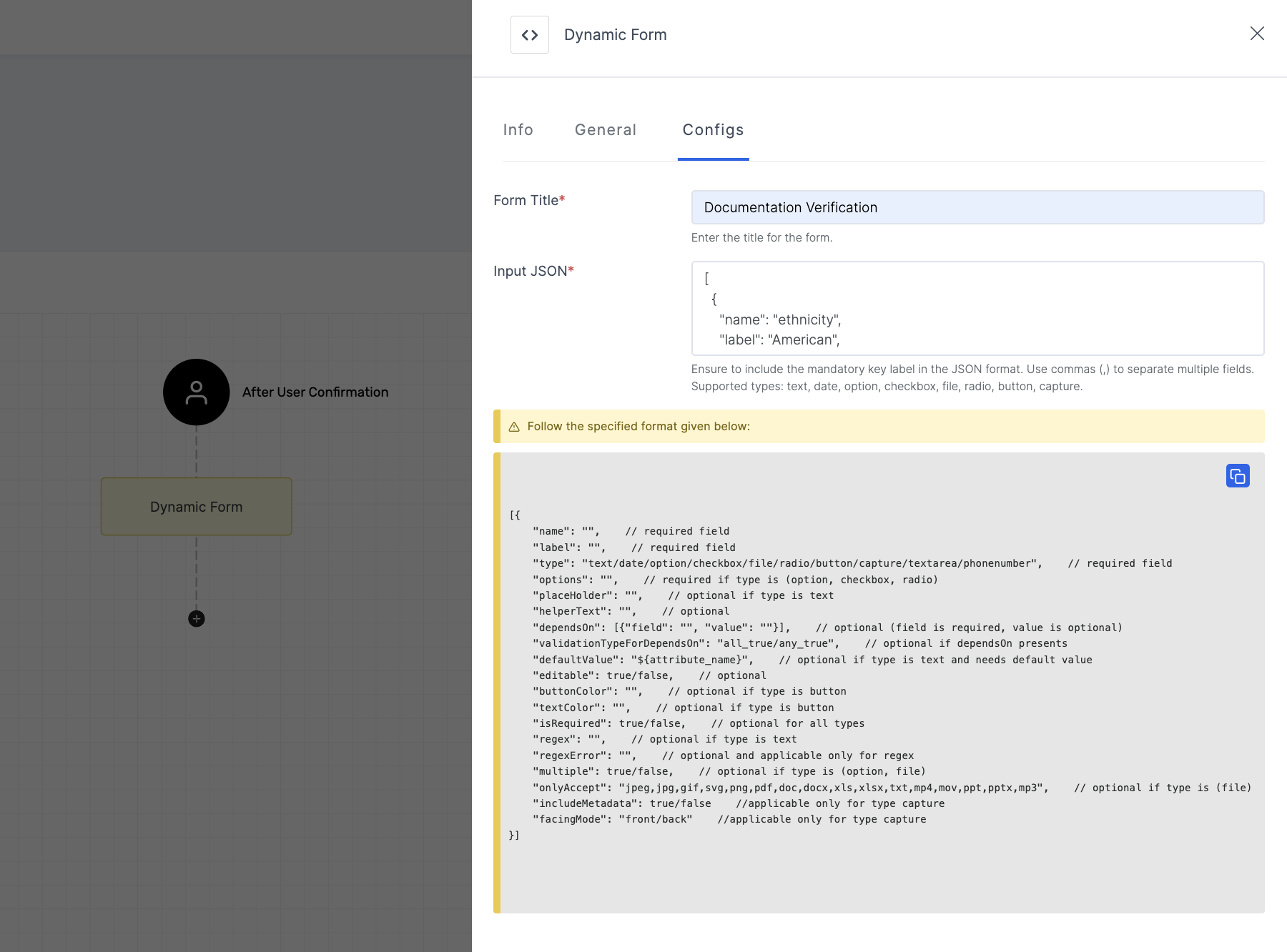
Manage Configs
(*) Indicates an action to be mandatory.
| Name | Description |
|---|---|
| Form Title* | Specify the title for the form. Only alphanumeric characters and spaces "a-zA-Z0-9" are allowed. |
| Input JSON* | Provide a valid JSON format specifying the fields you want to display on the verification page. This customization allows you to fetch additional user verification data, the supported field types you can include in the script are: text, checkbox, date, file, radio, button, capture and option. Ensure the script is enclosed within an array [] |
Here's how you can build your script
Dynamic Form to collect inputs such as aadhaar number, pan number, email, and phone number, following it with respective workflows like Verify Aadhaar, Verify Phone, Verify PAN, or Verify Email, the information entered in the Dynamic Form does not need to be re-entered during the verification process. Instead, it can be automatically prefilled in the next workflow step using specific keys configured in the Dynamic Form itself.
To enable this prefill functionality, use the following prefill keys:
- Verify PAN -
pan_number_prefill- Verify Aadhaar and Verify Aadhaar with OTP -
aadhaar_number_prefill- Verify Phone Number -
phone_number_prefill- Verify Email -
email_prefillBy setting up these keys, the details from the Dynamic Form are automatically populated when the process moves to the next workflow, reducing manual input.
Note that, for Verify Email and Verify Phone workflows triggered via API tool(Postman), if email or phone details are included in the user metadata of the request body, the system will validate those details at the API level first. If no values are present in the metadata, the inputs collected from the Dynamic Form will be used for verification.
5 After you've configured everything needed, click on SAVE.
6 Proceed to attach the workflow to the relevant application for execution. Refer to instructions on how to attach a workflow to an application here.
How it Works
1 Launch Postman or your preferred API tool and execute the flow by configuring the suitable Method, URL, and Body settings. If you're seeking guidance on how to perform these actions, see here.
2 Upon initiating the API call, a verification request will be sent to your configured Verification Way settings.
3 Based on the request, execute the flow in an incognito browser and follow the prompts to complete the verification process.
4 Begin by providing the necessary details, click on Proceed.
Please note that these buttons are customizable.
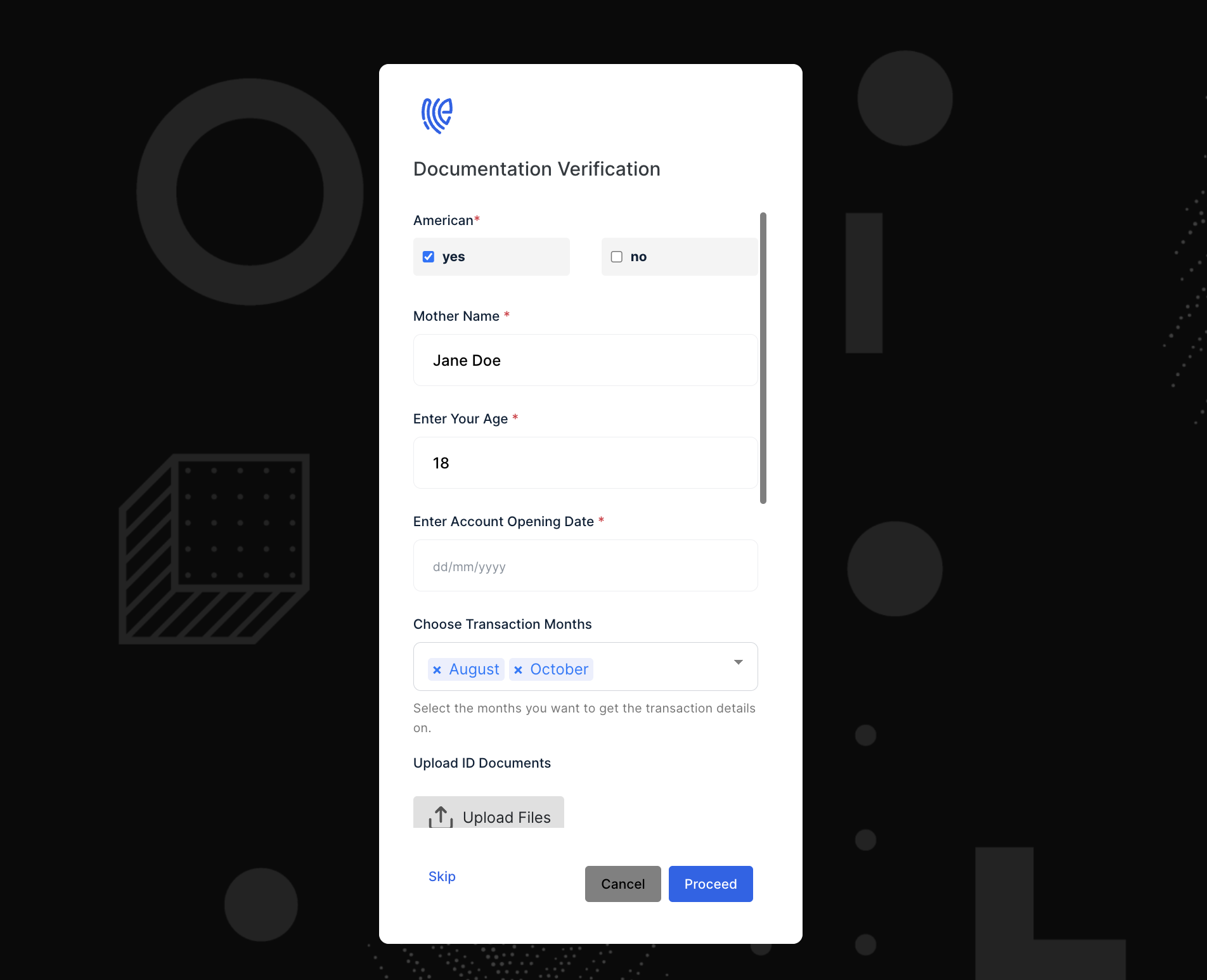
5 The verification process will be completed.
If "force onboarding" is enabled in the API request, all users, regardless of status, will be directed to the onboarding flow first, followed by the verification flow if configured.
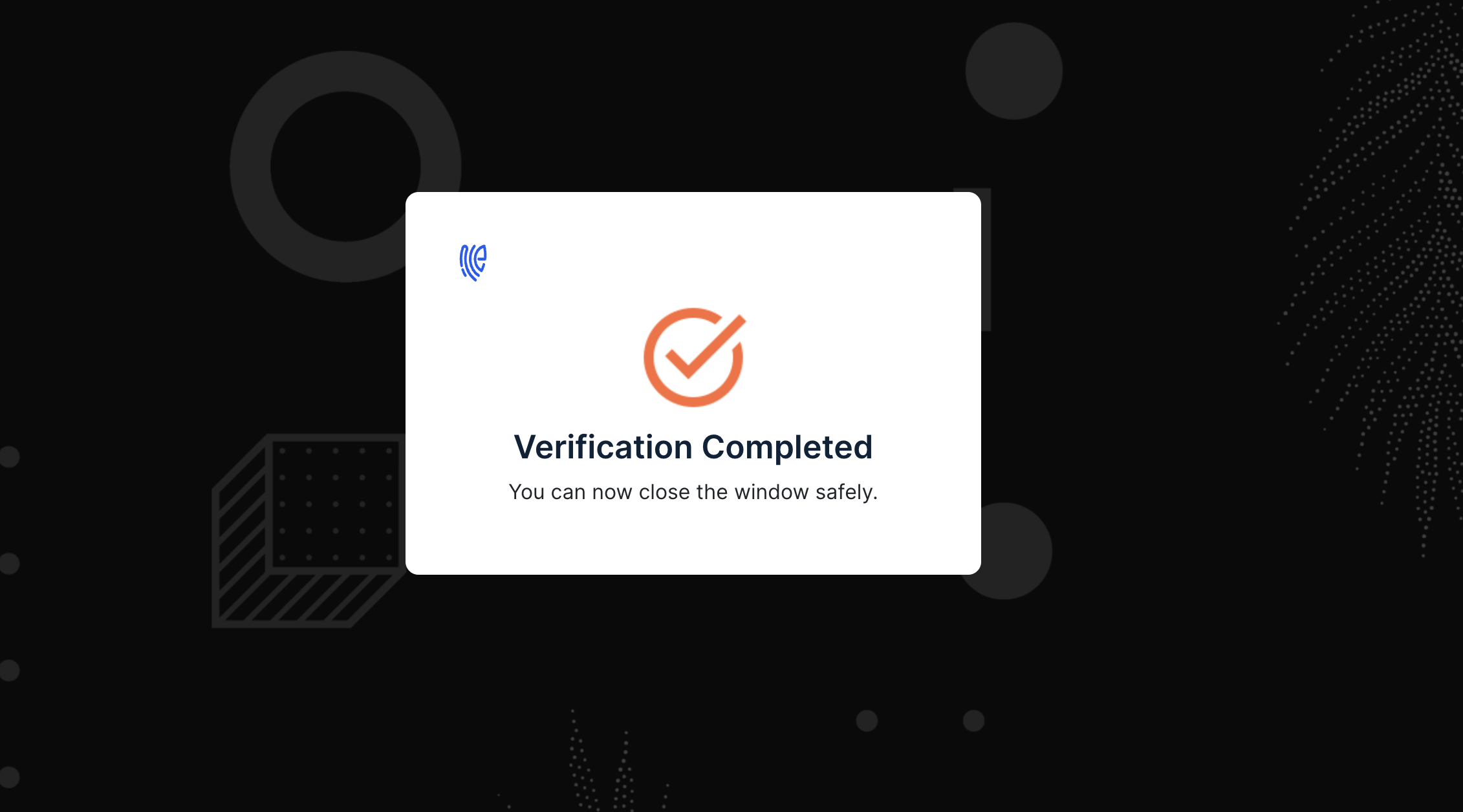
6 The response can differ depending on the chosen Verification Way and Notification Way configurations. To know more, see here.
7 Here is a sample response for Dynamic Form:
{
"request_id": "bec4127f-eac8-4245-9bb1-63f9f50a41b5"
"user_id": "mark@gmail.com",
"workflow": "verification",
"transaction_months": "August, October",
"confirm": "true",
"occupation": "Salaried",
"gender": "Female",
"ethnicity": "yes",
"details_from_documentation_verification": "true",
"mother_name": "Jane Doe",
"age": "18",
"phone_number_prefill_dialcode": "+91",
"phone_number_prefill": "73xxxxxxxxx",
"opening_date": "04/08/2000"
}